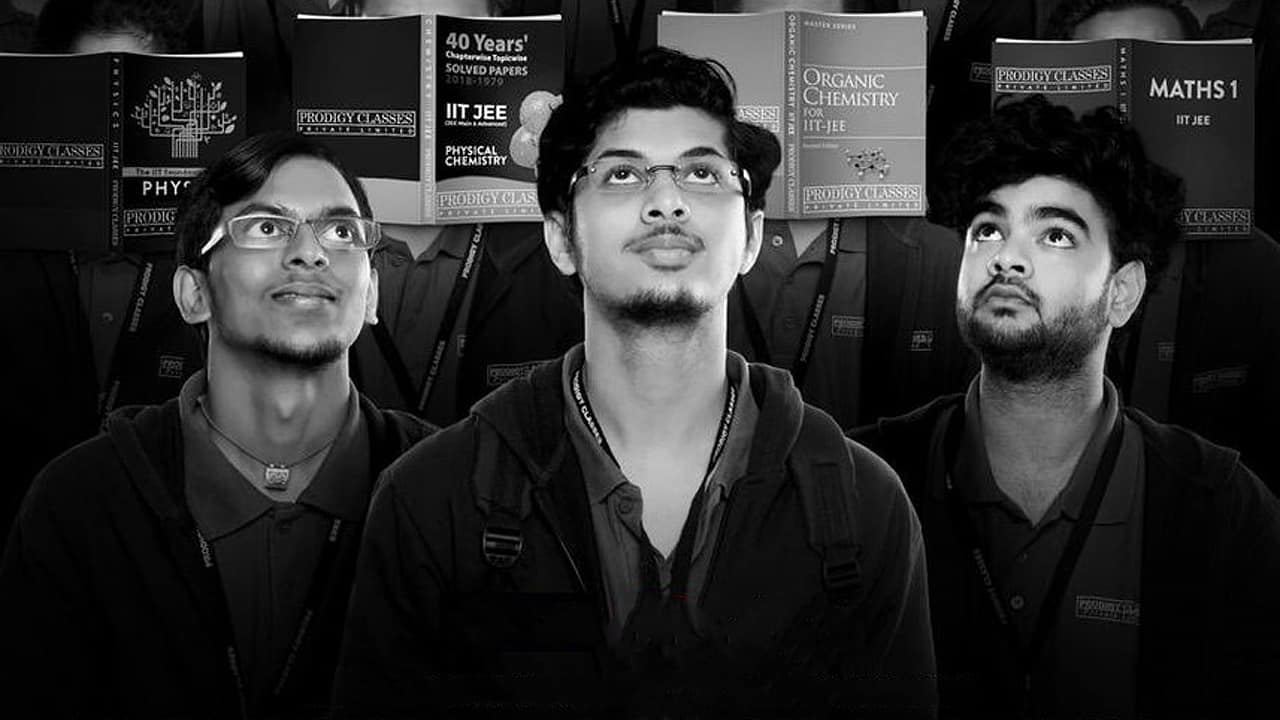With the reviews Kota Factory garnered with its first season I was concerned ‘what if it is nowhere near as good as what the YouTube views and reviews indicate?’ So, was it? The answer is a mix of both.
Kota Factory is a surprisingly (and irresponsibly) sincere look at the insular community of students who sacrifice their childhoods and dedicate the prime of their lives to ‘cracking’ one of the most challenging competitive exams for STEM careers. Director Raghav Subbu drops you in the middle of Kota in India’s first ‘Black and White’ show that tells an engaging story about IIT aspirants in the town of Kota, Rajasthan. It historically has been the preparation Mecca of India, attracting engineering and medical aspirants, for its ‘mahaul’(environment).
The second season of Kota Factory, now stamped with the Netflix ‘tudum’, offers a grimmer, more mature follow-up that actually won the sequel predicament. It touches upon the coaching institutes with billion-dollar valuations working in the background.
The series was praised for its poignant storytelling in the first season; it is written and styled to give you flashbacks to your preparation days. You can almost smell the city and feel the heat, even if this is the first time you’ve heard of Kota itself. Although Kota Factory follows engineering students closely, the overwhelming popularity shows the fan base of the show is way more than that. Even though as an adult viewer you know better, you also realize that for a 17-year-old, nothing matters more than what they are living through at the moment and that we’ve all lived through it.
I already spent half of my undergraduate degree attending online classes from home, along with millions of students all over the world. So when Kota Factory showed the alternate reality of students walking to class amidst the sun and joking with their friends over some “kachoris”, the nostalgic aspect of the show struck a chord and had me glued for the next two days.
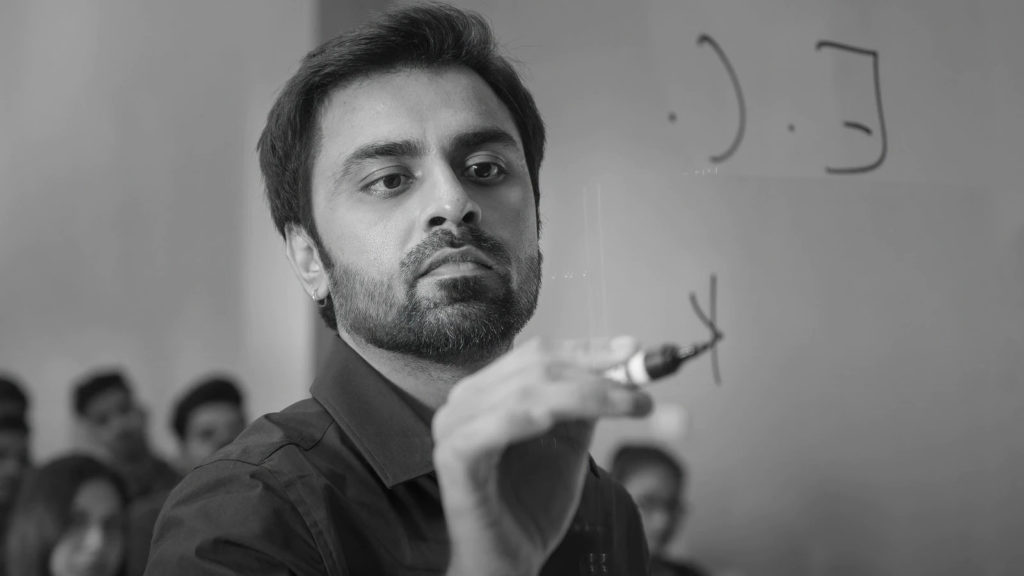
“IIT mein Chatur nahi jate, sirf Rancho jate hain” (‘Rote leaners don’t make it to IIT, only innovative thinkers do.’) ~ Jeetu Bhaiya (Jitendra Kumar)
Maheshwari Classes and Prodigy are marketed as coaching institutions that catapult students to the toughest technical university in the country. The numbers are stacked against individuals: the success rate for JEE being only 0.1%., the odds can only be marginally better for the candidates at Kota.
A changing trend in our pop culture representation is pushing the narrative that celebrates youth who go against the stream, choosing passion over the traditional career path, and preach that the path less taken is the path to ultimate happiness and a peaceful life. The young adults of Netflix’s Kota Factory are unlike the Imtiaz Ali-esque protagonists who give up on ‘boring’ professions and choose a ‘creative’ line; instead, Netflix gives an insight into the lives of youngsters toiling hard to be better at academics and excel in their exams.
Vaibhav, a 17-year old ambitious student, preparing his JEE exam is accompanied by his friends,-Uday, Meena and Shivangi, his first girlfriend Vartika, and his mentor Jeetu Bhaiya.
What the makers avoid is attaching too much to one polemic. The menial labor and gruesome hours behind exam preparation is often replaced by pushing relatable themes of living independently at a young age: bad food in the mess, sleep deprived state, frustration of bad exams, the blurriness around dating as a 16-17 year-old, and some clever supporting quests like Vaibhav trying to bribe his way out of Maheshwari classes, Jeetu Bhaiya’s personal struggling with his academy, romantic arcs of Uday and Meena with their respective interests, etc.
The show, though in monochrome, never goes with a one-sided approach. The good is offered up with the bad.
Economic Representation
These characters have all converged at a point from different walks of life, and play their own roles in Kota Factory skillfully, spurning cynical portrayals of the IIT-engineering race with its brilliant storytelling. Alam Khan is a worthy fan favorite as Uday, a dedicated friend but a backbencher student, who is smart enough to recognize his privileges and own academic limitations; Meena (Ranjan Raj) who enters as a background character hinting at comic stints soon lets you see he was actually worthy of Maheshwari all along- except financially.
An Inspirational Role Model
Jeetu Bhaiya has wisdom dripping out of every dialogue. While it occasionally seems preachy, you can tell that a young audience would be left in awe. “Peer pressure is a good thing, but make sure that your peers aren’t stupid,” says Jeetu Bhaiya as the kids listen with wide eyes.
Jeetu Bhaiya’s character gets more dimensions in the second season as we see him struggling alongside his students to navigate through uncertainty himself.
His hesitant approach and stumbling for direction after quitting Prodigy manifest as a counterpoint to his witty, one-track character.
Rampant Systematic Sexism
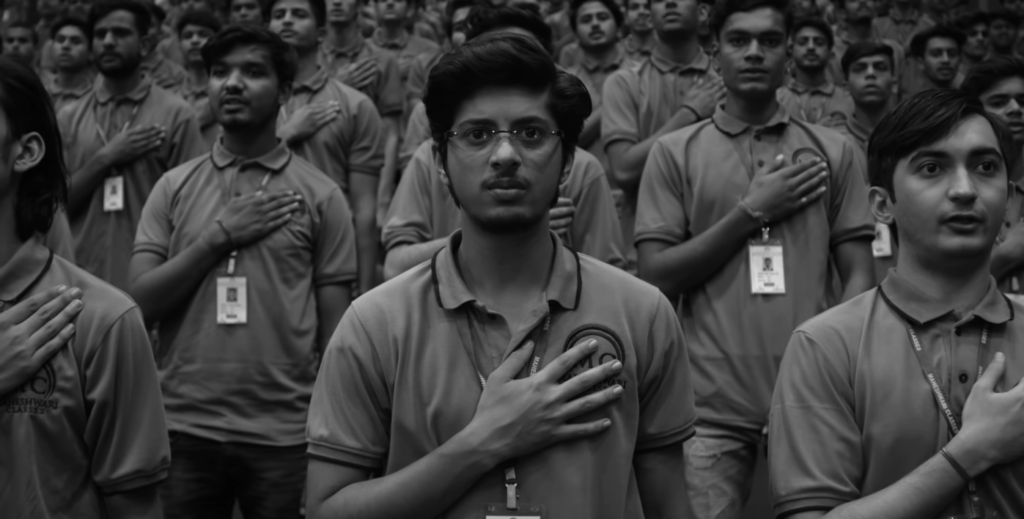
The head of Maheshwari gives a bone-chilling orientation speech to an auditorium full of students that sounds like a death sentence and you find yourself passively pressured by his words. “There are only successful men in this world. Unsuccessful, are not men,” he says to an audience that’s largely male and it makes you think of the repercussions of it on the young minds. It took me googling to find out that IIT in fact was a co-ed institution.
One of the things that disappointed me the most in Kota Factory season one was the absolute lack of female representation. It was the boys against the world with a mentor “Bhaiya”. Is this the ideal representation of the engineering race?
The second season tried to highlight how women feel outnumbered by the boys in Kota’s classrooms and experience things differently compared to their male counterparts, in the same classrooms and hostels. But having Jeetu Bhaiya give his usual sermon of laziness and nervousness to the girl students when the female audience know of deeper biological stressful events for females comes off as tone-deaf. Despite throwing several female characters in the mix in latter season, the show cannot overpower the glaring lack of female perspective.
The show struggles to address the sexist culture that has been breeding in engineering circles for decades and finally touches upon it in the latter season.
The female characters get more screen time which felt like a corrective move. Revathi Pillai as Vartika does a commendable job as Vaibhav’s shy romantic interest, yet her storyline as an under-confident student barely finds grounds. It did not help that Meenal, the Prodigy topper, was the only one who apparently wasn’t aiming for IIT at all, and that the only person who backstabbed Jeetu Bhaiya was the only female IITian they’d brought in.
The male-favoring progression is astonishing given Jeetu Bhaiya was even given a dialogue saying “because they always see male teachers and always hear how ‘men’ do things at IIT, the students’ perception of IITian is of a man.”
Breaking Taboo
The monologue from Shivangi to Meena educating him on menstruation and dispelling the myth around ‘females have it easy’ is probably my favourite moment from the show. Concurrently, Meena is also used to introduce a conversation around masturbation with Shivangi and then Jeetu Bhaiya, an issue I haven’t seen raised by the Indian media before.
Protagonist Character Flaws and Problematic Humor
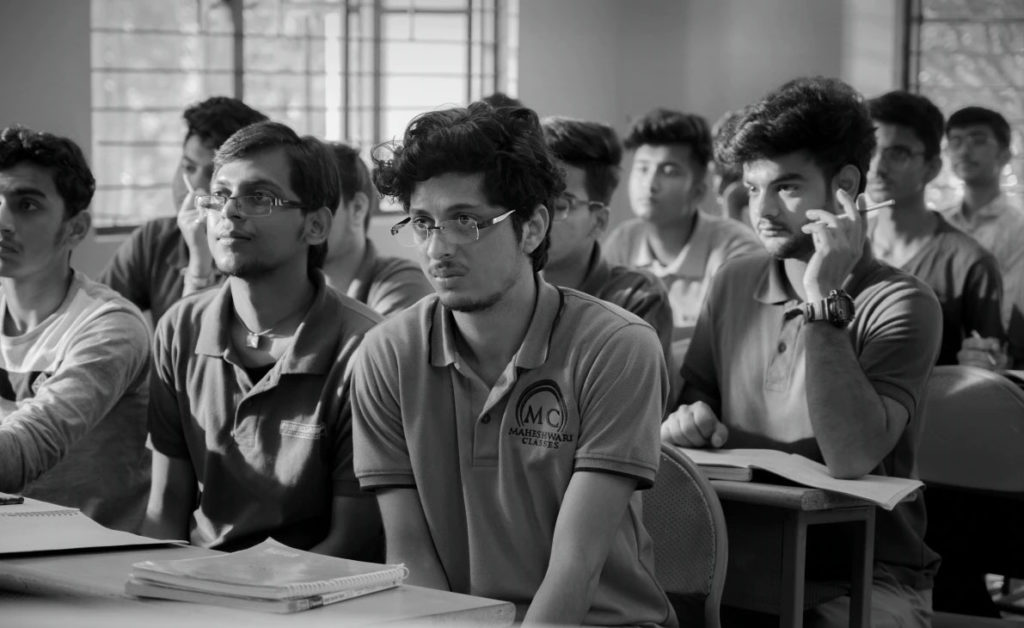
From solving Vaibhav’s Physics problems to checking up on his bowel movements, Meena goes all out for him. The character of Meena feels familiar in the sense that we all look for him in our friendships. Yet at the butt of most jokes is Meena, as if present in the room only to be laughed at and considered as an afterthought by the squad. His problems and struggles are constantly dismissed off by the group while a whiny Vaibhav always complains about his environment.
Vaibhav’s jealousy whenever Meena outperforms him is pathetic. He also doesn’t treat his new friend Sushrut any better. His throwaway comments reveal his inner sexist and colorist bullying self but the narration does not ruminate over it, therefore perpetuating these problematic views by not recognizing this.
Digging into the Education Business
While the students struggle with teachers at Prodigy in the initial episodes of season one, in season two the teachers at Maheshwari turn out to be competent researchers but inadequate instructors. This sends a strong message that the entities are to be seen as separate, and that learning is more to the student than the academy and teacher they learn from.
Kota Factory is a raw take at the choreographed business that education has become. It is nerve-wrecking to contemplate over what circus we all have been a part of. Maheshwari’s head is a more complicated villain than he first appears to be. As Kota Factory progresses with season 2, it questions the premises and benefiters of the domain of a mentor and circumstantial stakeholders.
Unnecessary Utopian Approach
The central theme of Kota Factory was to rely on channeling the adrenaline rush towards JEE preparation. The characters of the show are extremely aware that they are on the brink of a life-changing journey and the path to that excellence requires a lot of sacrifices. “IIT preparation tumhari normal life nahi hai,” is a dialogue from Kota Factory. Therefore – the “fun trips”, the “undying friendship” and “fond memories” of Kota days among kids who’ve only known each other for months occasionally come off as redundant and counterproductive, given these are essentially the components said students have been promised as part of the “package” they win IF they clear their exams.
Jeetu Bhaiya Needs His Own Pill
It gets preachy and repetitive with how there isn’t a problem that Jeetu Bhaiya can’t solve by launching into a sermon that often contradicts what he previously said. He’s like a pastor who tells his congregation that they don’t need to attend mass anymore, which makes him instantly cool, but then rigidly instructs everyone that they need to pray a million times a day at home instead. But what Jeetu Bhaiya fails to communicate to the kids is that there is a life beyond IIT and exams.
Kota Factory is the closest thing we have to Dead Poets Society. Yet, had Kota Factory given Jeetu’s characters more layers in addition to his pedagogical role, the show would have had more avenues to explore. Maybe the creators also would’ve realised that throwing Jeetu Bhaiya at at every problem isn’t the best solution. A very important question not raised yet in season two is how Jeetu Bhaiya had failed to identify one of his students being at the edge.
The quintessential mentor Jeetu bhaiya, placed at a pedestal to students, throws random scientific metaphors when they approach him for counselling, but the same Jeetu is also unable to identify when a student is at their breaking point.
His casual dismissal of Vernali’s anxiety beyond organic exam nervousness hints at a bigger problem- our refusal to prioritize mental health and identify when to stop the hustle.
Dangling Question of Mental Health Pitfalls
Kota Factory deals with a setting that heavily influences the fragile mental health of impressionable teenagers, but while the show does glorify the value of hard work, it does NOT sufficiently highlight the pitfalls of not being able to excel and what it can do to one’s mental health enough. The show tries to portray the students to be asking the right questions and trying to make an informed opinion, but the half-baked portrayals don’t work as the makers instantly go back to dismissing off the very real questions they infused into the audience’s minds a while back. It feels forced when they throw in scenes of someone else unpredictably getting into IIT as a way out- not really solving the crisis at hand, of how there are still significantly more frustrated students further disappointed by their (unmagical) results.
Had Kota Factory been bolder, it would’ve focused more on the drudgery and mundanity; the doubt and disappointment of students fighting to fit into the system.
Did Kota Factory Romanticize the Grind?
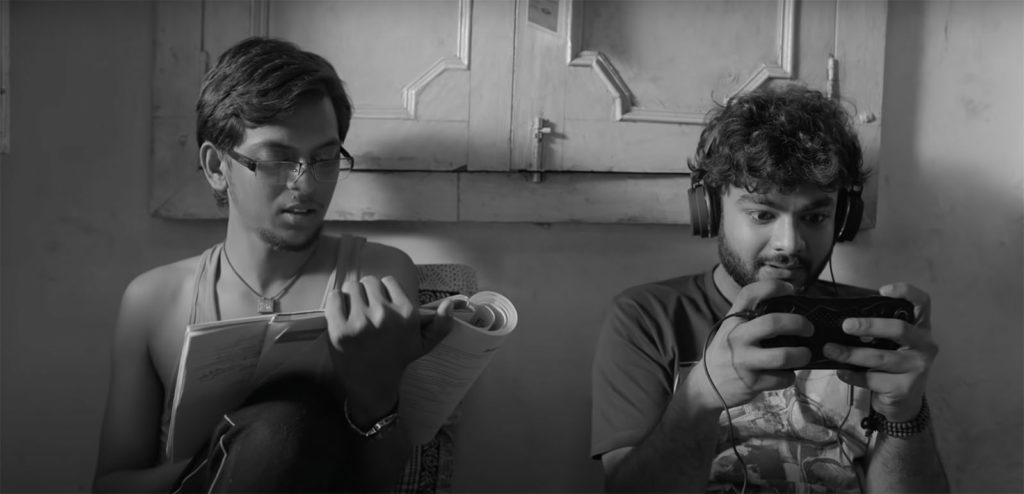
Kota Factory has an admirable authenticity to it, but it doesn’t really investigate the real-world implications of the culture that it (unintentionally?) problematically romanticizes. Kota Factory should have discussed the need to reform the education system that relies heavily on how a student performs on a given day, and how it could singularly change the course of their life.
The show intends to show the dark and toxic side of JEE preparation, but ends up glorifying it to a large extent. Yes fighting a tough battle does build confidence, but at what cost? How much of it is really self-actualization and how much “what will people say if I don’t?” Are we fighting the battle just for the sake of building confidence, or is it becoming a matter of life and death? In a country where student suicides are on the rise, do we really need to glorify the struggle of getting the tag of an elite institution?
Season 2 oscillates between students trying to identify the purpose of getting into IITs (popularity, money, job security) and giving up on their dreams. Sometimes you find yourself heaving a sigh of relief thinking that one of them decided to quit and prioritize his mental health, but the show tells us that it’s probably not a good idea to give up.
Newsflash: it is. Tunnel visioning a specific goal at such early age obstructs your ability to grow around your failures and identify better opportunities that reflect your individualism better. This is merely the 12th standard, there are so many more phases in life where you will need clear answers to yourself for what you’re doing, or else you’ll find yourself demotivated halfway through. When Kota Factory keeps all its students steadfast on the track to IIT despite elucidating the politics-heavy influences out to profit off of clueless students, it further glorifies the same hustle culture where taking one minute break means getting catapulted a thousand places behind your best friends; where there is no space to breathe, a world that cultivates more and more Vernalis.
Cast
Kota Factory lucked out with its casting, and the second season continues to bring the best out of its cast members. Jitendra Kumar and Mayur More ace at their characters. Ranjan Raj, Ahsaas Channa, Alam Khan and Vaibhav Thakkar are perfectly cast in their roles. Sameer Saxena as Maheshwari sir grabs attention in his limited scenes by lines like “Unrewarded geniuses are not geniuses but cliches”; he makes sure we hate him.
Cinematography
Raghav Subbu, with his newfound ‘Tudum’ label, is able to make Kota a character rather than the base of season two. He puts crucial scenes captured artistically to portray the robotic nature of Kota through the shot of a chimney emitting smoke to a bird being freed from cage while Vaibhav and the boys are unable to break free from the shackles of DPT. The monochrome of the show plays a major part in the storytelling process and immerses the audience into a visual experience in itself.
Background Music
The background music of Kota Factory from season one had my ears bleeding yet, the background score of season two was one of the best highlights. Kota Factory season 1 would hit play on the same background song about friendship every time Vaibhav and the gang got together for some shenanigans. Every.Single.Time. Fortunately, second season’s musical score composed by Karthik Rao and Simran Hora, and produced by Ankur Tewari has the melancholic charm that adds depth to the characters and their life-defining moments.
The Verdict
For those who have not watched Kota Factory yet, I recommend watching this poignant series when you have some time to introspect about your life. Of course, there are loopholes, but none so deep that you don’t watch it. The cliff-hanger from a very well-done season finale is enough for fans to predict a Kota Factory Season 3.
